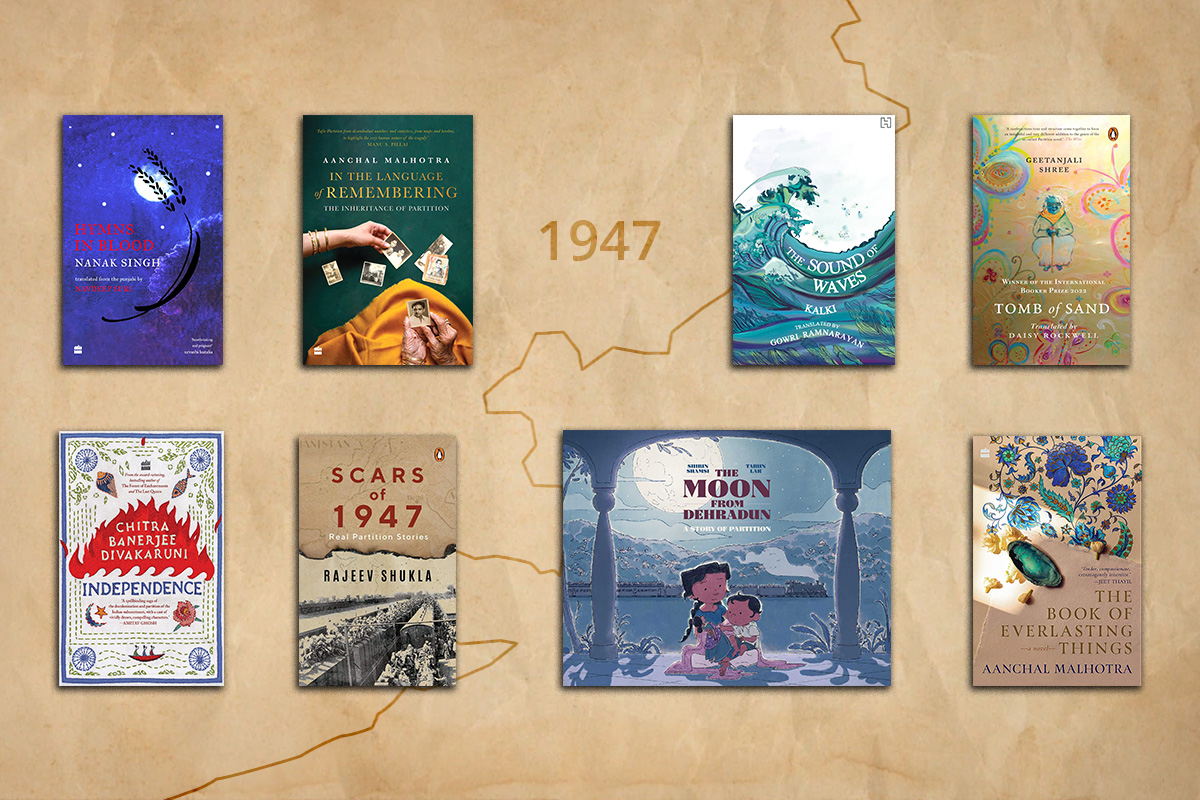
There is no dearth of books on the Partition of India but 2022—which marked 75 years of the event—saw a spurt in the publishing of Partition literature, from records of oral narratives to fictional love stories and more. By Paridhi Badgotri
More than seven decades later, the Partition continues to impact lives of people—not just its original survivors but also their descendants. And that impact shows in the stories coming out of the subcontinent. Capturing a defining moment in the history of the region, Partition literature encompasses a wide variety of fiction and non-fiction from multiple countries and in multiple languages. The past few years have seen a surge in Partition literature, in part because many of the original survivors have passed on and there’s a fear of losing their stories with them. This year, as India marked 75 years of its Independence—and the Partition—many writers came out with poignant stories of people that were ripped apart by a stroke of ink on a map.
Author and oral historian Aanchal Malhotra has contributed significantly to Partition literature. Her debut book, Remnants of a Separation, brought the topic of Partition to a whole new set of young readers. Her book was a departure from the historical narration of the events of the Partition in that it covered the event through the emotions and material memories of the individual survivors. This year, she followed it up with another non-fiction book, In The Language of Remembering, which explores the inheritance of the Partition and its effects among the descendants of the survivors. As the year draws to a close, we are greeted by her first novel, The Book of Everlasting Things, which revisits the themes of Partition and memory through a fictional story: With the Partition of India and Pakistan, two lovers in Lahore—a Hindu perfumer’s apprentice and a Muslim calligrapher’s apprentice—are forced apart. Their life stories echo the stories of two nations, split apart yet bound together by love and memory.
Another recent book that tackles the events of the Partition is Chitra Banerjee Divakaruni’s Independence. Juxtaposing the agony of the Partition with the ecstasy of India’s Independence, the novel narrates the story of three sisters living in Bengal who are caught up in events beyond their control, their unbreakable bond, and their struggle against the odds. The beautiful cover of the book is adorned with Bengali art.
Arguably the biggest book on the topic this year was the 2022 International Booker-winning Tomb of Sand, the English translation of Ret Samadhi. The first South Asian novel to win the award, it tells the story of an 80-year-old woman who battles depression, triggered by the death of her husband, by striking bold new friendships and embarking on a journey to Pakistan—to resolve the trauma of her teenage experiences of the Partition. The translator of the book, Daisy Rockwell, has been a regular bridge-maker of Partition novels, and her expertise is on full display here as she transmits Geetanjali Shree’s clever play of Hindustani words into English.
Translations hold an important role in reviving old narratives too, specially those pertaining to a historic event. This year was blessed with English translations of two novels that were born just after the Partition. Written in 1948 by acclaimed Tamil writer and activist Kalki, Alai Osai got a fresh lease of life this month by Gowri Ramnarayan’s English translation, The Sound of Waves. With poignant detail and lyrical prose, Kalki tells the story of a fractured country that extraordinarily changed the lives of its citizens. In the same year that Alai Osai was being put to page in the southern part of India, another was taking shape in the North: Nanak Singh’s Khoon de Sohile. This book was translated from Punjabi into English by Nanak’s grandson, Navdeep Suri, and was reborn as Hymns in Blood. It tells the story of a family that is forced to leave their homeland amid the communal violence of 1947. (Kunzum was honoured to host a book discussion on this translated work with Suri and an esteemed panel featuring Aanchal Malhotra, Suvir Saran, Sonam Kalra, and Sanjoy Roy.)
While most of these books train the lens on the lives of the common folk affected by the Partition, Rajeev Shukla’s Scars of 1947 offers insights into the lives of game-changers: those who went on to become prime ministers, presidents, industrialists, medical researchers, and more. With stories of figures like Manmohan Singh, Muhammad Ali Jinnah, and Avtar Narain Gujral, the book is a moving account of an unforgettable period that changed the trajectory of lives on both sides of the border.
The horrors of Partition might not seem like a great topic of discussion with kids, but it is important to educate the young ones about the historical event and acknowledge our collective past. Shirin Shamsie’s The Moon from Dehradun is a picture-book that makes this seemingly impossible task a cake-walk for parents. The children’s book illustrates Partition through the eyes of a young girl named Azra and her doll Gunya.
With its abundance of Partition literature, this year gave us some much-needed accounts of compassion, friendship, love, kindness, and perseverance of the human spirit—all blooming against violence, loss, pain, and lingering trauma. And for that, we’re grateful.
Related: It’s Terrifying to Think Fictional Characters Have Such a Hold on You: Author Aanchal Malhotra

You missed one – Ladies’ Tailor ?
Oh yes! Thank you for reminding us 🙂